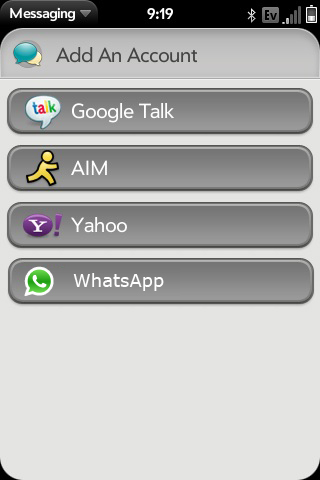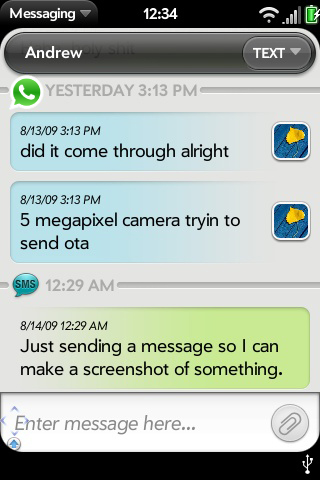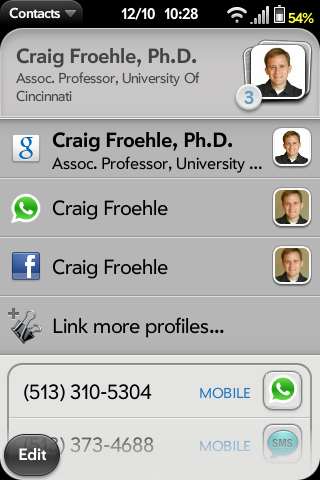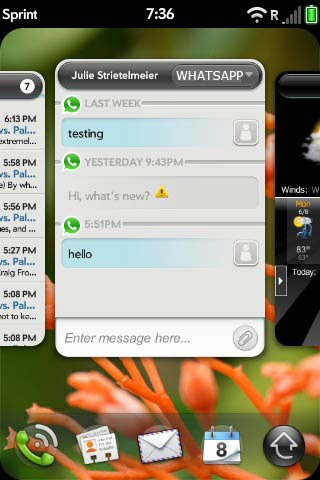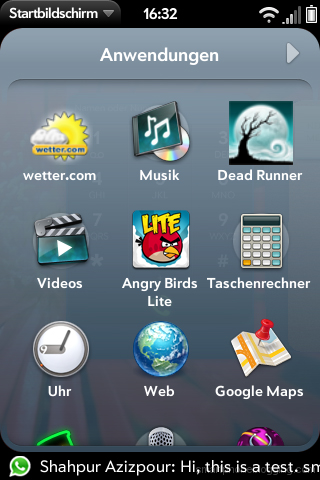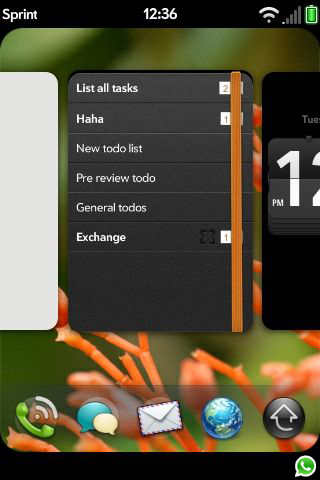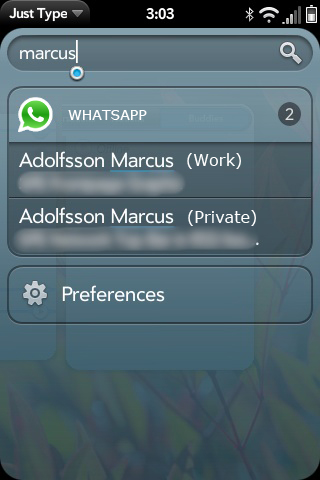If you have a smartphone with a data plan and you have not used Whatsapp, I really suggest you give it a try. In a previous post, I raved about its importance for any smartphone platform, and months later I even feel more strongly about it.
EDIT: Just in case, WhatsApp Messenger is a cross-platform mobile messaging app which allows you to exchange messages without having to pay for SMS. WhatsApp Messenger is available for iPhone, BlackBerry, Android and Nokia.
It’s come so far, that I would have a really hard time considering a smartphone that is not supported by Whatsapp. Two “upcoming” platforms come to mind that currently lack Whatsapp: Windows Phone and webOS.
Given Whatsapp’s strong relationship with Nokia (both Symbian and S40 (beta-stage) already have Whatsapp), I think it is safe to say that they are at least giving strong thought to supporting Windows Phone (once Mango arrives that provides the necessary contacts database API).
WebOS on the other hand may not have the necessary contacts or market share, but I find it just about the ideal smartphone platform for Whatsapp. All their phones come with a hardware keyboard and have a clear messaging focus. Also, webOS is ideal for integrating a messaging platform like Whatsapp. In this blog post I want to describe (through mock-ups) how Whatsapp could be implemented on webOS and I hope to convey to them that the actual OS takes care of many of the things they had to worry about with other platforms. Also, I hope HP sends their SWAT team to Whatsapp in order to help them implement this.
Why do I do all this? Because I fancy a webOS smartphone, but I don’t want to loose out on Whatsapp. Should you share this feeling with me, I strongly encourage you to sign this petition.
So, here we go.
Synergy
One of webOS’ strong points is something called Synergy. HP defines it as follows:
“Instantly all your content integrates perfectly from all sources. All in one place. All your contacts from everywhere come together as one big happy family. Facebook friends’ birthdays show up in their contact files. Work and personal calendars appear side by side. IM and text messages are combined into one conversation“.
This system level feature of webOS allows other services to link into the OS and feed it data. Messaging services like Skype or gTalk already offer this possibility. From what I have read, Whatsapp is at its core a Jabber-based messaging service like gTalk, so I think it should be able to work.
This means that a first step, as a user, is to install Whatsapp and add the account details from the centralised place:
From that point onward, Whatsapp is present and integrated into the Messaging app. In one single thread you can have IM, Whatsapp and text conversations with one specific person:
Furthermore, Whatsapp will integrate with the Contacts application and it shows up as a communication option for those contacts that are your Whatsapp friends:
As is clear from the above, webOS already takes care of the UI and contact integration.
Multi-tasking and card view
Another outstanding feature of webOS is its ability to multi-task through the card metaphor. Each application is represented by a card, but different parts of an application – like a message in the email app, an account in a twitter application, etc – can have a separate card. Therefore, you can imagine having different conversations open (each in a different card) for different people simultaneously. These conversations can be stacked together or left separately (as in the image below):
Notifications
WebOS is also praised for its practical notification system. The notifications are unobtrusive and allow you to deal with multiple notifications at a time or separately.
When a Whatsapp message comes in from a contact, at the bottom of the screen you will see the Whatsapp icon appear in combination with the message and person you receive it from.
If you hit the notification, the conversation is opened in a separate card. Should you not be able to reply, then the text will disappear and you will continue to see the Whatsapp icon at the bottom, so that you can deal with it, when most convenient.
Just Type and Quick Actions
Lastly, webOS offers a very useful feature called Just Type. When combined with Quick Actions, you have a very handy and productivity enhancing feature available at all times.
Just Type activates when a user starts typing in launcher or card view, which then starts an activity which can include searching, sending an email, making a phone call, etc. An app can integrate with three different Just Type components, of which one is Quick Actions. Quick Actions displays apps that initiate a new action with the user-entered text, e.g. send a Whatsapp to a specific contact, create a new twitter status update, create a new memo, etc.
Whatsapp’s use of Quick Actions are varied, but the following is an example where you quickly start typing the name of a contact and the option of contacting them through Whatsapp appears as a Quick Action.
Wrap up
In summary, I hope the above conveys how Whatsapp and webOS are a great combination. I hope that HP and Whatsapp take note and start thinking about bringing them together.
PS. a couple of notes:
- I don’t actually own a webOS smartphone, so I sourced the screen shots from different web sites. I hope this causes no problems. A thanks to the actual creators of the screen shots – you know who you are.
- Thanks to my sister for photoshopping all the screen shots in order to show how Whatsapp would integrate.

